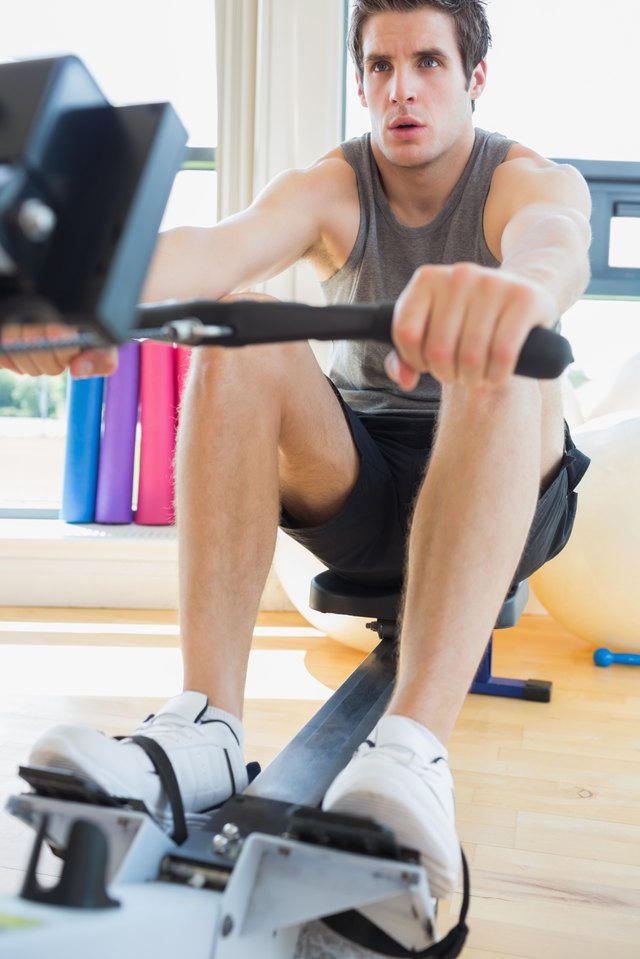
Rowing is a challenging, low-impact cardiovascular workout that works your entire body. Because you’re using so many muscle groups at once, rowing also burns a lot of calories: up to 754 calories an hour if you weigh 185 lbs., according to Harvard Health Publications. But you’ll only get real benefit from your home rowing workouts if you’ve got the right machine and know how to use it.
Types
Home rowing machines come in two general configurations. Dual-handle rowers mimic the motion of sitting in a rowboat. A rail-mounted seat slides back and forth between two handles, pulling on the handles to imitate the rowing motion.
A single-handle rower mimics the feel of sweep rowing. The seat still slides back and forth on a rail mount, but instead of pulling on two handles you use both hands on a single handle, which is attached by chain to the resistance mechanism in front of you.
A single-handle rower mimics the feel of sweep rowing. The seat still slides back and forth on a rail mount, but instead of pulling on two handles you use both hands on a single handle, which is attached by chain to the resistance mechanism in front of you.
Resistance
Rowing machines come with four general types of resistance. The lowest-end machines and most dual-handle rowers come with hydraulic resistance. Hydraulic resistance tends to be rougher than other types of resistance.
Air resistance closely mimics the feel of real rowing and automatically adjusts to your pace. The harder you pull, the more resistance you get. But air resistance machines can be very loud.
Magnetic resistance tends to be smooth and quiet, letting you set the machine’s resistance in advance. The highest-end style of rowing machine resistance, water resistance, isn’t something you’re likely to have in your home; it requires a large, heavy tank of water to simulate the feel of actual rowing.
Air resistance closely mimics the feel of real rowing and automatically adjusts to your pace. The harder you pull, the more resistance you get. But air resistance machines can be very loud.
Magnetic resistance tends to be smooth and quiet, letting you set the machine’s resistance in advance. The highest-end style of rowing machine resistance, water resistance, isn’t something you’re likely to have in your home; it requires a large, heavy tank of water to simulate the feel of actual rowing.
Storage
Many, but not all rowing machines fold for storage and transport. Dual-handle, hydraulic-resistance rowers tend to be the most compact, with shorter slide rails and folding into a smaller package for easier storage. The longer rail on magnetic and air-resistance rowers can make storage more problematic, especially if the rower does not fold.
Use
You’ll get the most benefit out of your home rower if you use it correctly. Grasp the handle or handles, set the machine to low resistance and scoot up toward the display. Start with a strong leg drive, pushing the seat back from the display. Tilt back slightly from the hips and pull the handle in toward your lower ribs. Extend your arms, tilt forward slightly, then scoot forward toward the console again.
Price
As of 2010, according to Men’s Total Fitness, you can expect to spend from $600 to $800 for a quality home rower--about the same you’d pay for a decent exercise bike or a basic motorized treadmill or elliptical trainer.





No comments:
Post a Comment